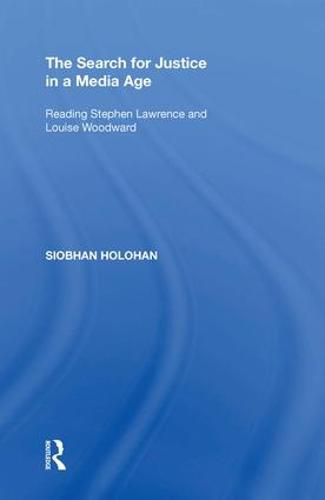Readings Newsletter
Become a Readings Member to make your shopping experience even easier.
Sign in or sign up for free!
You’re not far away from qualifying for FREE standard shipping within Australia
You’ve qualified for FREE standard shipping within Australia
The cart is loading…






What can we learn from the legal cases of Stephen Lawrence and Louise Woodward? How do the legal system and the media contribute to a collective understanding of class, nation, race and gender? In this book, Siobhan Holohan explores media representations of law and order in the context of notions of multi-culturalism and victim-centred politics. Two high profile cases - the murder of Stephen Lawrence and the US trial of the British au-pair, Louise Woodward - are examined. Holohan argues that the stories built up around Woodward and Lawrence - the organization of public discourse around a sacrificial figure - have contributed to exclusionary patterns of social order. The book offers a perceptive account of what makes some criminal legal cases prone to scrutiny and spectacle and provides a vivid illustration of the presence of power relations in legal decisions. In conclusion, the author draws on the model of the Macpherson report to propose a more inclusive form of social and legal judgement that takes into account social inequalities.
$9.00 standard shipping within Australia
FREE standard shipping within Australia for orders over $100.00
Express & International shipping calculated at checkout
What can we learn from the legal cases of Stephen Lawrence and Louise Woodward? How do the legal system and the media contribute to a collective understanding of class, nation, race and gender? In this book, Siobhan Holohan explores media representations of law and order in the context of notions of multi-culturalism and victim-centred politics. Two high profile cases - the murder of Stephen Lawrence and the US trial of the British au-pair, Louise Woodward - are examined. Holohan argues that the stories built up around Woodward and Lawrence - the organization of public discourse around a sacrificial figure - have contributed to exclusionary patterns of social order. The book offers a perceptive account of what makes some criminal legal cases prone to scrutiny and spectacle and provides a vivid illustration of the presence of power relations in legal decisions. In conclusion, the author draws on the model of the Macpherson report to propose a more inclusive form of social and legal judgement that takes into account social inequalities.